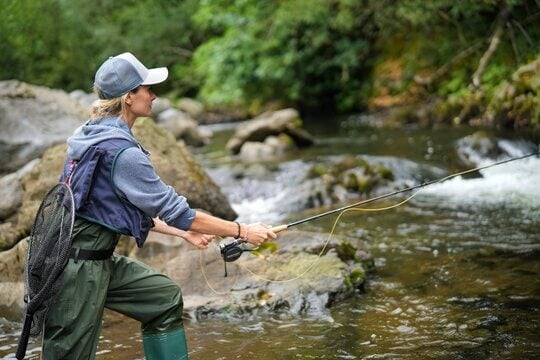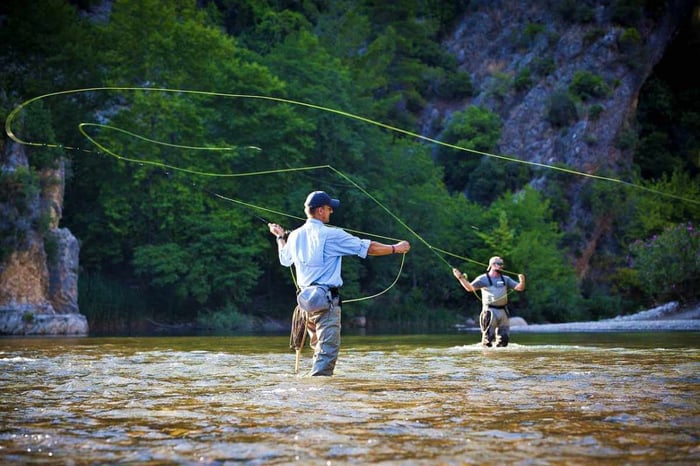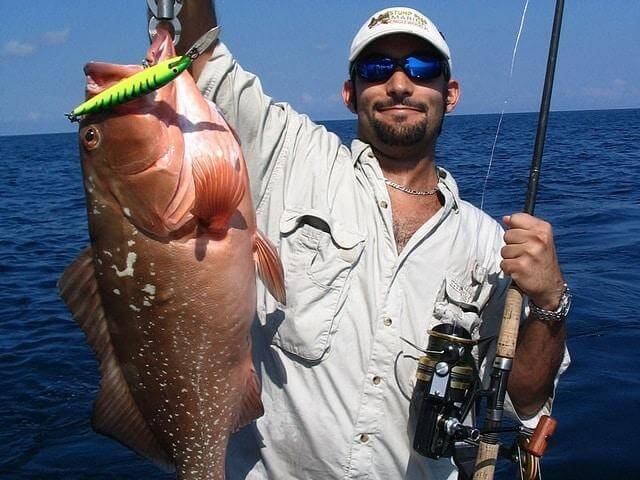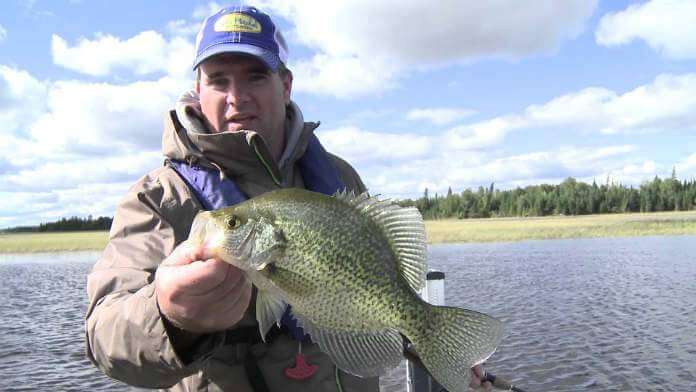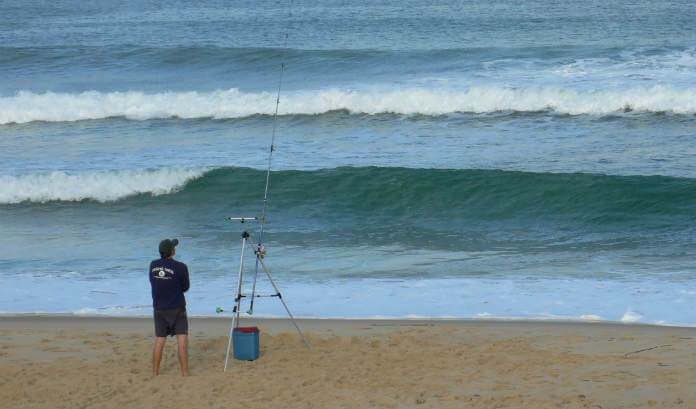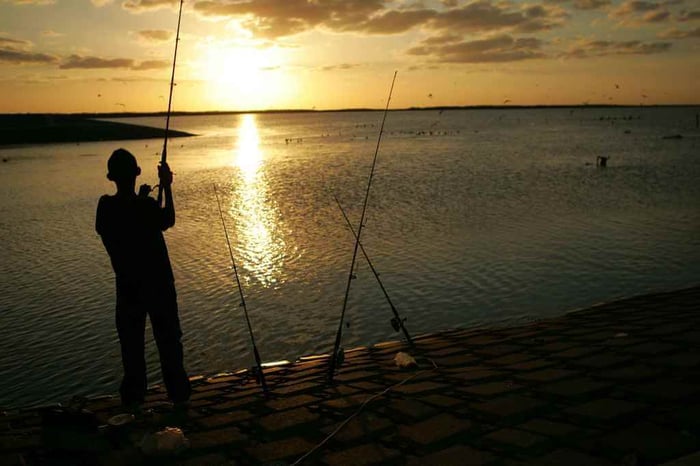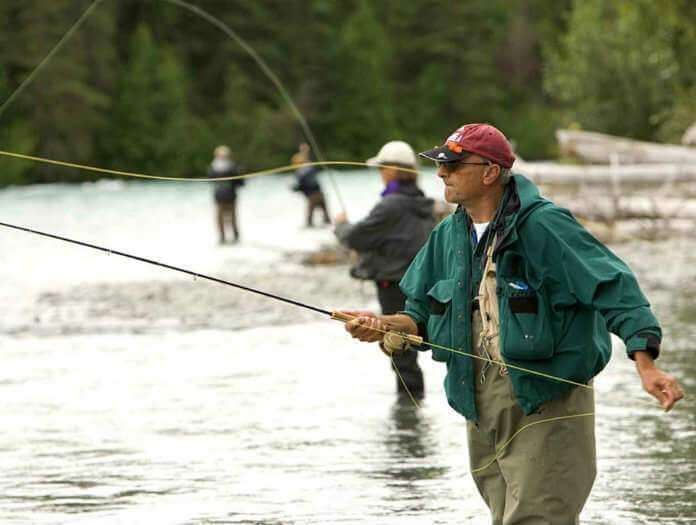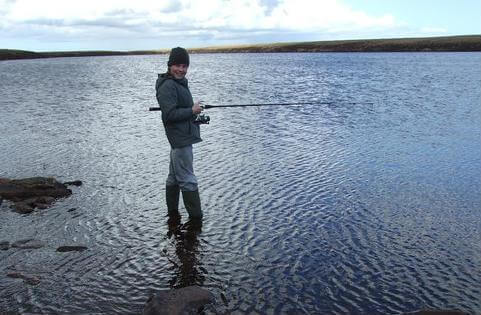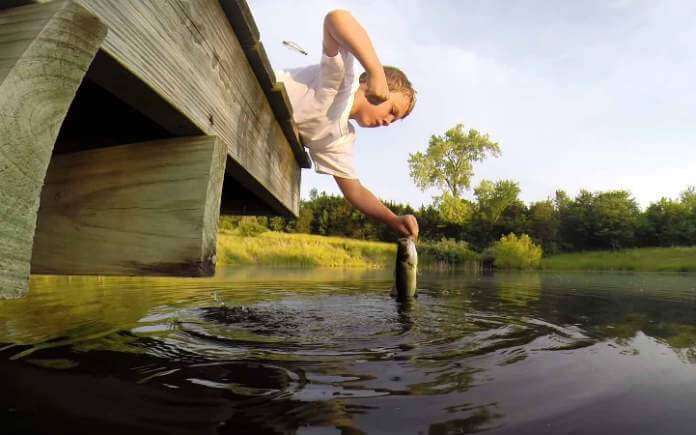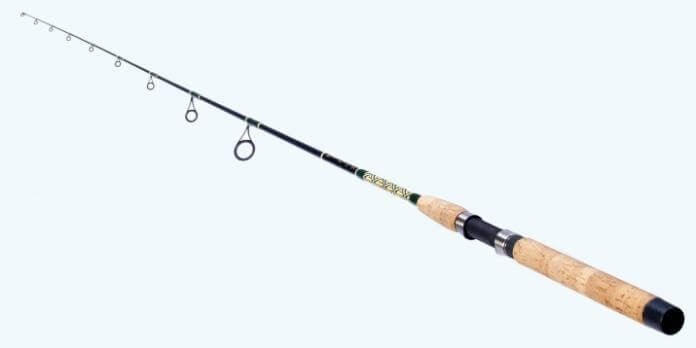Fly fishing for women is gradually becoming well-recognized worldwide and has become an activity for everyone.
But is there a difference between men’s and women’s approaches to fly fishing? Do they practice the same tricks and hacks to master fly fishing? How does fly fishing work?
Fly fishing is not a big deal in some parts of the globe. It is a highlight and a climax of their year for other parts. What in fly fishing makes it so intriguing and everybody seems to enjoy it? Before we further enlighten ourselves with how women are doing in fly fishing, let us understand the nature of fly fishing.
WHAT IS FLY FISHING?
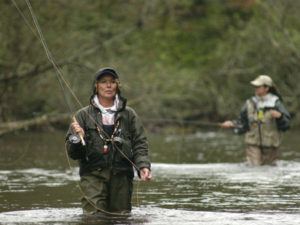
Fly fishing is an angling technique in which a synthetic fly is used to capture fish species. The fly is attached to the fly rod and cast into the waters. However, as simple as it may seem to sound, various techniques are used to master the art of fly fishing.
One needs to consider certain factors to achieve a perfect fly fishing method. Also, once you have learned even just the basics of fly fishing techniques, you can guarantee yourself loads of fish.
Be mindful of your fly rod, the fly reel, and the lure. The weight of the lure has a significant bearing on what techniques you should use. The type of fly rod and fly reel you are using also has some added effects on your ability to fly fish. Fortunately, some techniques were designed for whatever type of fly rod and fly reel you use. The only requirement would be your skill and common sense, perhaps.
How does Fly Fishing Work?

There is a slight distinction when comparing fly fishing to traditional fishing. If you have witnessed fly fishing and conventional fishing, you will notice that the difference would be primarily in the lure or bait used.
Traditional Fishing uses a thin fishing line and heavier lure or bait. The logic behind traditional fishing is that the lure or bait will be the one to carry the momentum when you cast. Then, the light-weighted line follows the motion and direction of the lure or bait. It will be impossible to do traditional fishing by using a lightweight lure or bait. That is the advantage and technique of Fly fishing.
On the other hand, Fly Fishing uses specialized equipment and techniques to cast flawlessly. As explained earlier, fly fishing uses artificial flies that are very light in weight. Even if you are catching some large fish species, the lures or baits you are to use when fly fishing is still minimal in weight.
With that being cleared out, the question remains, “How do you get the light-weighted bait out in the waters to where the fishes are?”. Simple, in fly fishing, the technique is with the fly line being used. The fly is a specialized equipment that significantly benefits a person when flying fishing. Why? Because the fly is the one who would be responsible for exerting the weight needed for the casting technique.
Where is the Best Place to do Fly Fishing?
There is a long list of specific destinations perfect for fly fishing. But there is an easy tip that you always need to remember when choosing a place to fly fish. Fly fishing is doable, whether in freshwater or saltwater. The only difference would be the type of fish inhabiting the area. Usually, freshwater contains cold-blooded fish such as salmon and steelheads. As for the saltwater, the kind of fish that is mostly caught is bass.
What are the Different Techniques for Fly Fishing?
It has been globally acknowledged that the techniques used for fly fishing vary. They depend on several factors, including the location, weather, fish habitat, whether it is in small streams or large rivers, in an open ocean, and so on. Each approach person has a unique way of fly fishing. So, let us now try to understand how women’s strategies work.
FLY FISHING, WOMEN PERSPECTIVES
Fly fishing for women has been taking over the world these past decades, to the point that there are already leading websites and well-renowned organizations that promote it. Women have made it an empowering practice to inspire women to engage themselves in this activity.
Selecting the Perfect Equipment is Important

For women who are starting, selecting the correct equipment may be challenging. Multiple types of equipment are needed to ensure a quality fly fishing adventure. For example, there are various kinds of fly rods. However, it would be best to choose a fly rod depending on the fish you want to capture. Aside from the weight of the fish, other characteristics to consider when choosing your fly rod are the length, weight, and flex.
Ideal Length for a Fly Rod

Important tip: Since many fly rod manufacturers develop different fly rods with other characteristics, it needs to be clarified what fly rods to choose. The safest and most effective fly rod to choose that has been universally tested and proven to be versatile in all-around situations is a 9-foot fly rod. In addition, if you still have a small amount of uncertainty in you, you can purchase one long rod and a small rod.
Ideal Weight for a Fly Rod

For starters, the weight of the rod is not the number you see on the scale. However, the number indicates the diameter of the fly line that the fly rod is built for casting.
There are different kinds of fly lines, too. They all differ in size, particularly in thickness. The characteristics of the lines correlate to the weight of the fish. The thicker the line, the heavier the fish you should catch.
Ideal Action for a Fly Rod

The term Action is a fish lingo used to describe the ability of the fly rod to flex. Fly rod factories have built fly rods to bend at specific points, especially when catching a fish.
There are three kinds of “flexing rods”: Fast-Action or Tip-flex Rods, Medium-Action or Mid-flex Rods, and Slow-Action or Full-flex Rods.
The Right Flies
Next to all of these, choosing the right fly is also important. Sure, flies are designed for larger water bodies, and some are effective in solid currents. In short, variations of flies are available, but their abilities depend on the fly fishing situation you will be in. The size of the location and the water movement are two essential factors in choosing your flies.
Knot Tying Techniques
There are multiple knot-tying techniques to use for fly fishing. The most commonly used is the Arbor Knot. It is also important for you to learn different types of knotting techniques.
Fly Casting Techniques that Women Can Nail

Overhead Cast
The overhead cast is the go-to fly fishing technique ever used. Not only has it been amazingly effective in catching large fish, but it is also the easiest to comprehend and execute. (Disclaimer: Then again, everyone is different.)
This fly fishing technique is when the angler enables the fly line to fly through the air in a forward and backward movement pattern, creating a candy-cane-like shape.
Roll Cast
The roll cast involves no momentum at all. The angler only casts the fly line immediately in front of her to prevent hitting someone or something that is behind her.
Side-arm Cast
Lastly, the side-arm cast is a fly fishing technique that takes the most time to master. This is often used to enable the angler to cast the fly line if there are obstacles such as hanging bushes or branches.
Now that we have covered all the basic and most important things that one has to know before fly fishing, let us delve into the gear and outfits perfect for fly fishing. Below, you will find a list of items, along with their descriptions, that are perfect for fly fishing.
Types of Flies and Their Uses

Dry flies
Dry fly fishing is a calculating method where the draw is a fake fly that floats on the outer layer of the water and doesn't sink beneath it—grown initially for trout fly fishing.
Dry-fly fishing utilizes a line and flies that float. They are joined by an OK 3 to 5-meter length pioneer, commonly of nylon monofilament line, which is tightened so it is almost undetectable where the fly is hitched. The fisherman can supplant the last meter or so of nylon as required.
The point of dry-fly fishing is to copy the downstream floating of a genuine fly on the outer layer of the water. Finding success requires manual expertise and decent information on the fish and its environmental factors. It is likewise a pleasurable occupation on a sluggish, marvelous Summer's day. Due to this, it acquired a standing as the blue blood of calculating games, which is better than any remaining sort of calculating.
A dry fly is intended to land delicately on the outer layer of the water without breaking it and becoming wetted. It need not be innately light. They are frequently oiled or treated with another water repellent. Dry flies are utilized in freshwater.
Wet flies
Wet flies are subsurface flies that copy a food hotspot for the fish you focus on. The damp fly technique is significantly more sympathetic for novices and requires less information and artfulness to bring about an extraordinary catch.
Most fishers would coordinate a bar like that with a drifting line. This is perfect since most wet fly fishing is in riffles. Drifting lines work perfectly in riffles. If you are fishing further water, a sinking tip might help.
A weight-forward drifting fly line is an inside and out vital decision for fishing different wet flies. Wet fly snares are heavier and simpler to project, bringing about better execution in more profound water.
At the point when fish are in more profound water, they're less inclined to be frightened away by a fly sprinkling on the outer layer of the water and are bound to pursue a wet fly versus a dry fly. The one drawback to wet flies is that it tends to be challenging to discern whether a fish has the fly as the ongoing pulls on the line. We can utilize various instruments to address this issue — strike markers being the most noticeable.
Nymphs
Nymphs, or flies that mirror youthful bugs and are fished submerged, are intended to exploit the consistently messy subsurface. This is why nymphing abilities are highly prioritized in any fly angler's weapons store.
Both lines are generally regularly utilized to reenact these normal activities with a phony sprite: drifting or sinking. This is the very thing you want to recollect: Dry flies are great on hotter days when there is a more prominent possibility at surface portals. In comparison, sprites work better on colder days and in little streams where downpours have diminished the opportunity of fish being frightened by your fly.
Streamers
Streamers can be a decent decision, particularly when the water is stained or grimy. Streamers are brilliant, looking through examples to track down dynamic fish.
Streamers are more excellent flies than you fish on a functioning recovery, and these flies impersonate baitfish, crawfish, parasites, and giant sea-going bugs like hellgrammites. Streamers are the fly-fishing likeness regular baits. Since the fly is generally moving, strikes can be hazardous.
Conversation and Ethics in Fly Fishing
Catch-and-release practices
Catch and release isn't simply a strategy; it's a moral way to deal with fishing that focuses on the prosperity of fish and their environments.
By considering size limits, caring for fish carefully, and utilizing proper equipment, fishermen can guarantee that delivered fish make due and flourish.
To forestall extra pressure and deal with fish in a way that is essentially as empathetic as expected, it is important to keep the fish in the water until eliminated. Try not to allow the fish to flail uncontrollably on a boat deck or within a live well, and make sure to deal with fish with wet, exposed hands on the off chance that you mean to deliver them.
Leave No Trace principles for anglers
While rehearsing "catch and release," utilize barbless hooks and be sure not to harm the fish. Try not to battle fish to exhaustion, use a bar and line of adequate strength, and try not to suspend a lost and forsaken soul by the fishing line. Keep fish in water while handling for release, and don't touch gills.
Invasive species awareness and prevention
Invasive species are non-local fishes, meaning they have been acquainted with our streams from another geographic region. Frequently, invasive species contend with local species for assets and adversely affect the nearby biological system.
In freshwater environments where fly fishing is often done, obtrusive species can negatively impact local fish populations and their territories in more than one way as they rival local fish for resources, go after local fish, adjust/change fish's natural surroundings, and interbreed with local fish species, prompting hybridization and hereditary introgression.
Fly Fishing for Women: In A Nutshell

A. Gear Selection and Fit
Pick fly fishing gear planned explicitly for ladies, including poles, reels, waders, and boots. For ladies' fly fishing gear proposals, search for lightweight swimming boots and fishing shoes consistent with shoe size. Nobody likes massive, cumbersome, weighty feet (which can likewise be a well-being risk while swimming through rough streams and waterways), yet having help and traction is significant. The best fly fishing gear for female amateurs will let us invest our energy in figuring out how to fly fish instead of battling with gear that doesn't fit right.
Gears
- Lefty Kreh Professional Fly Rod
- Wild Water Fly Fish Complete Starter Package
- Crystal River Fly Fish Combo Kit
- Eagle Claw Featherlight Fly Rod
- Sougayilang Colorful Assortment Dry Fly Fish Flies
- South Bend Fly Kit
Clothing
- W’s Nano Puff® Jacket
- W’s Spring River Waders – Regular
- Frogg Toggs Hellbender MF Chest Wader
- Baggies™ Shorts – 5″
- Barely Bra
- Capilene® Thermal Weight Bottoms
- W’s R1® Pullover
- W’s Capilene® Midweight Crew
- Sun Mask
- Fitz Roy Trout Stretch Fit Hat
- Fitz Roy Trout Visor
- Tech Sun Booney
- Foot Tractor Wading Boots
- Technical Sun Gloves
- Neoprene Socks with Gravel Guard
- Bimini Stretch Fit Cap
- Fly Vest
B. Safety and Self-Care
Bring additional well-being things like water, spotlights, maps, and a PDA or radio. Continuously wear foot gear fitting to the circumstances. Remain dry, warm, and shielded from the components. Wear a waterproof sunscreen with a SPF (sun security factor) of something like 15.
Focus on well-being while fishing alone or in far-off areas. Continuously inform someone about your fishing plans and expected return time, and convey fundamental security gear like a medical aid pack, crisis whistle, and route devices.
C. Women's Community and Support for Fly Fishing
Search out women-specific fly fishing clubs, studios, and occasions to interface with other female fishermen and gain from their encounters. It's currently easier to join because the times of sharing fishing stories at the month-to-month club meeting have been replaced with the moment delight of sharing stories via online entertainment. Join online discussions and virtual entertainment gatherings to share tips, stories, and photographs with individual ladies fly fishers.
Taking part in a community group grants you a chance to be with individuals with whom you can embrace the camaraderie of the fly fishing local area and support each other in chasing after your energy for the game.
